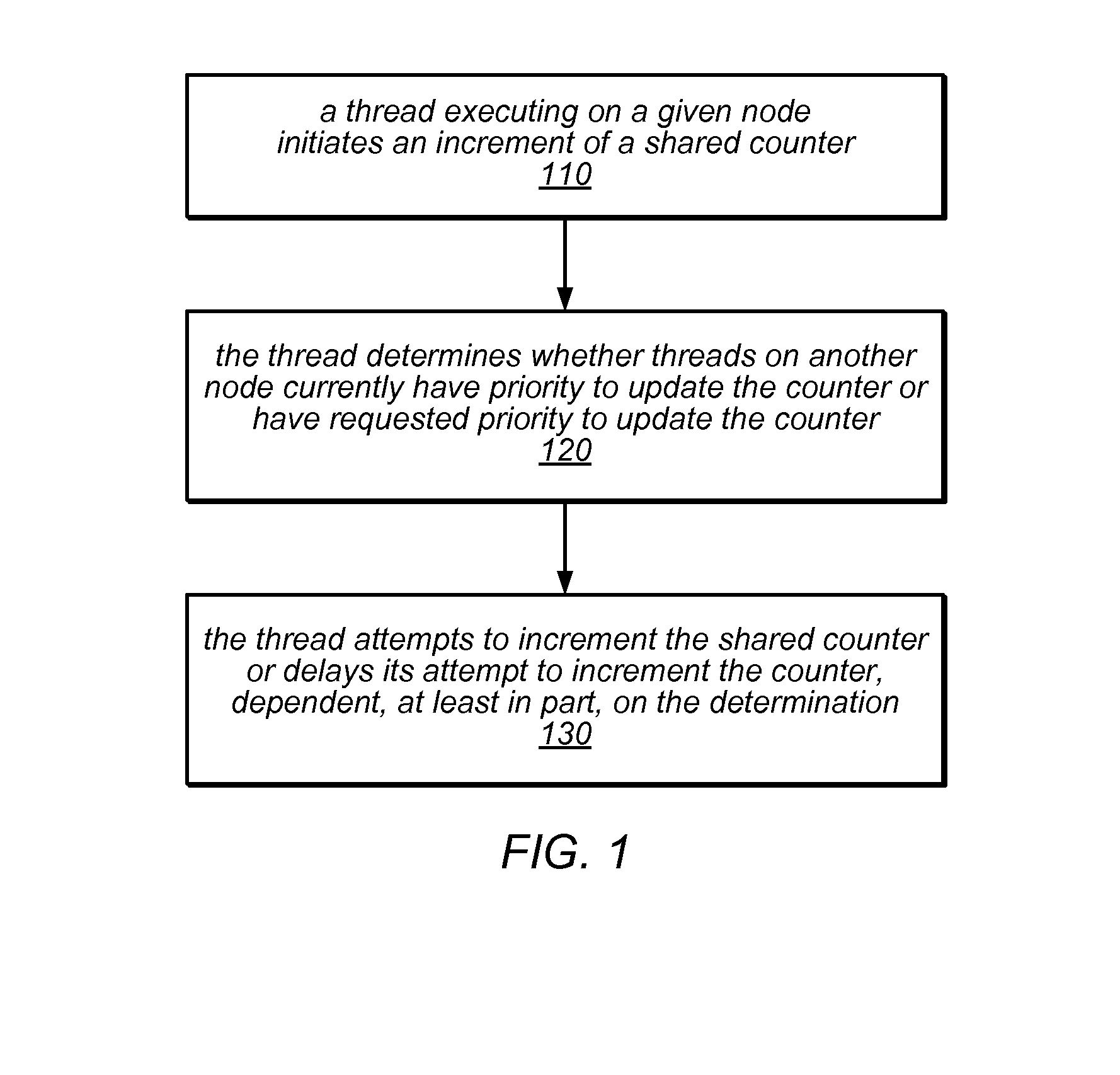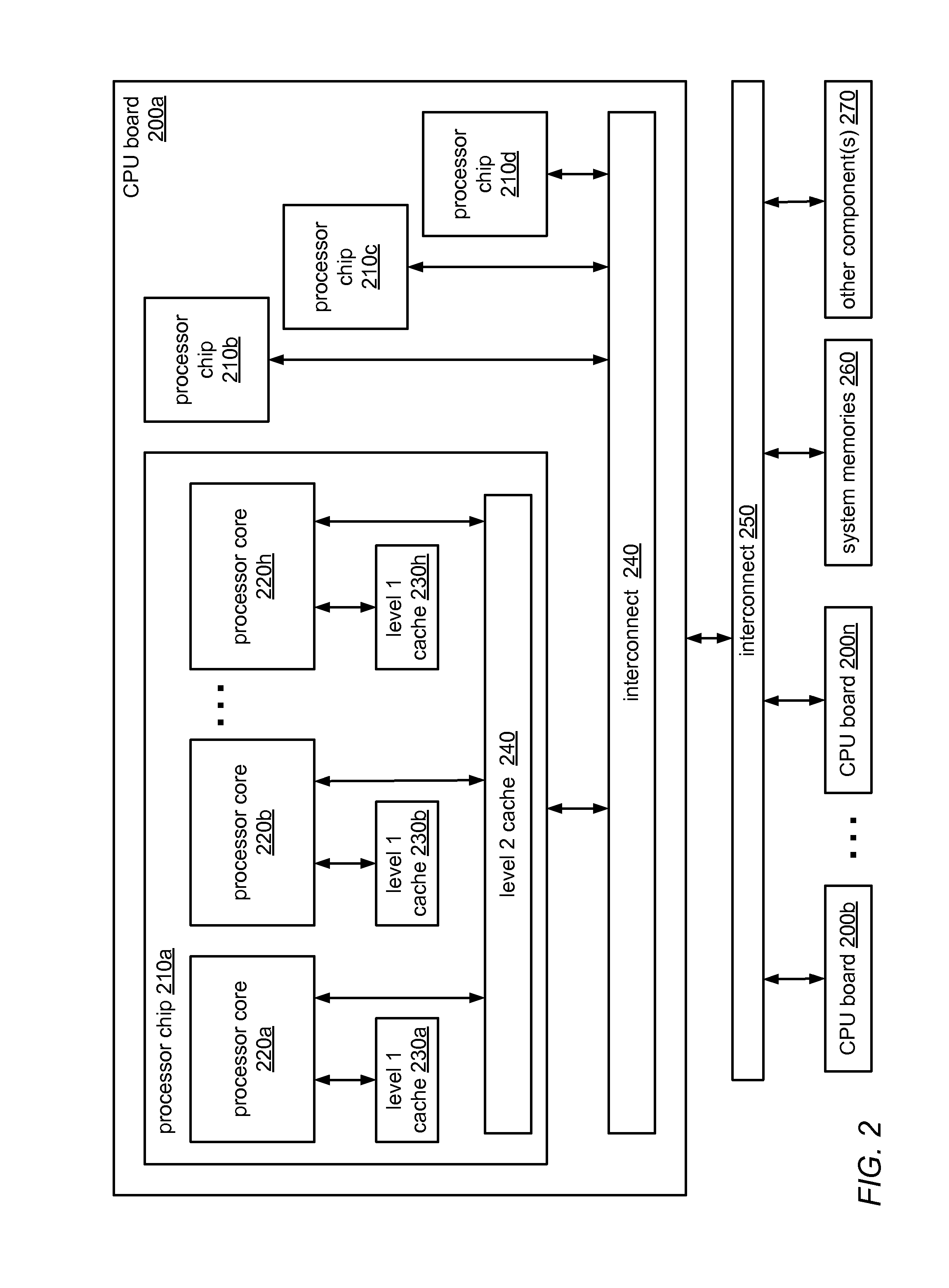System and Method for Implementing Scalable Contention-Adaptive Statistics Counters
a statistics counter and contention-adaptive technology, applied in the field of shared statistics counters, can solve the problems of inconvenient counter modification, inaccuracy that is not useful, and commonly used nave concurrent implementations quickly become problematic, so as to improve the overall performance, reduce cache misses, and improve the performance of applications executing
- Summary
- Abstract
- Description
- Claims
- Application Information
AI Technical Summary
Benefits of technology
Problems solved by technology
Method used
Image
Examples
Embodiment Construction
[0026]As noted above, the use of statistics counters is very common in most large software systems. Accesses to shared statistics counters can be a source of contention between concurrent threads of a multithreaded application, including those that execute in systems that support hardware and / or software transactional memory. Multicore machines are growing in size, and accordingly shifting from simple bus-based designs to NUMA and CC-NUMA style memory architectures. With this shift, there is an increased need for scalable statistics counters. The system and methods described herein may in some embodiments be used to implement scalable statistics counters. In different embodiments, the scalable statistics counters described herein achieve this scalability by splitting a counter into multiple components, thereby reducing contention on each component, or by employing techniques by which the counter is updated less frequently. Both classes of techniques may significantly reduce conflict...
PUM
 Login to View More
Login to View More Abstract
Description
Claims
Application Information
 Login to View More
Login to View More - Generate Ideas
- Intellectual Property
- Life Sciences
- Materials
- Tech Scout
- Unparalleled Data Quality
- Higher Quality Content
- 60% Fewer Hallucinations
Browse by: Latest US Patents, China's latest patents, Technical Efficacy Thesaurus, Application Domain, Technology Topic, Popular Technical Reports.
© 2025 PatSnap. All rights reserved.Legal|Privacy policy|Modern Slavery Act Transparency Statement|Sitemap|About US| Contact US: help@patsnap.com



